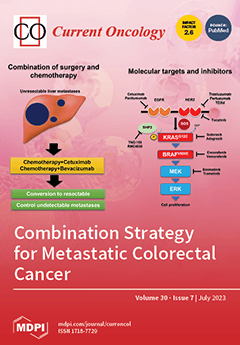Background. Eastern Cooperative Oncology Group (ECOG) performance status is used in decision-making to identify fragile patients, despite the development of new and possibly more reliable measures. This study aimed to examine the impact of frailty on end-of-life healthcare utilization in deceased cancer patients. Method. Hospital Frailty Risk Scores (HFRS) were calculated based on 109 weighted International Classification of Diseases 10th revision (ICD-10) diagnoses, and HFRS was related to (a) receipt of specialized palliative care, (b) unplanned emergency room (ER) visits during the last month of life, and (c) acute hospital deaths. Results. A total of 20,431 deceased cancer patients in ordinary accommodations were studied (nursing home residents were excluded). Frailty, as defined by the HFRS, was more common in men than in women (42% vs. 38%,
p < 0.001) and in people residing in less affluent residential areas (42% vs. 39%,
p < 0.001). Patients with frailty were older (74.1 years vs. 70.4 years,
p < 0.001). They received specialized palliative care (SPC) less often (76% vs. 81%,
p < 0.001) but had more unplanned ER visits (50% vs. 35%,
p < 0.001), and died more often in acute hospital settings (22% vs. 15%,
p < 0.001). In multiple logistic regression models, the odds ratio (OR) was higher for frail people concerning ER visits (OR 1.81 (1.71–1.92),
p < 0.001) and hospital deaths (OR 1.66 (1.51–1.81),
p < 0.001), also in adjusted models, when controlled for age, sex, socioeconomic status at the area level, and for receipt of SPC. Conclusion. Frailty, as measured by the HFRS, significantly affects end-of-life cancer patients and should be considered in oncologic decision-making.
Full article






